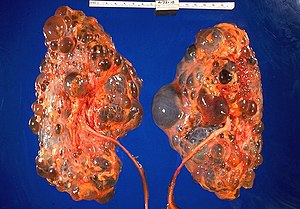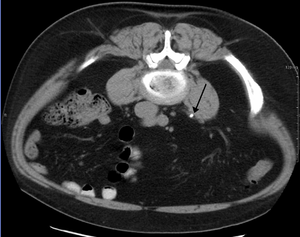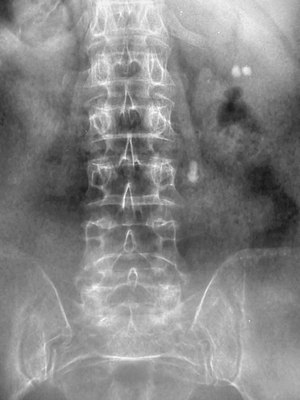Extra corporeal shock wave
lithotripsy is an accepted well tried and proven method of treating specific types of
kidney stones. It has been used consistently since the 1980's for the treatment of kidney stones. It is widely recognized as the leading noninvasive method of treating acute and chronic kidney stones. although side effects are generally mild and well tolerated it should be borne in mind that the best way of avoiding complications is by being aware of the contraindications for the procedure to begin with; these include..
|
|
| 3 mm stone in the ureter (Photo credit: Wikipedia) |
- Pregnancy
- Uncontrolled Infections of the urinary tract
- Uncontrolled alteration of coagulation
- Aortic or renal artery aneurysm
- Serious skeletal malformations
- Serious obesity.
Complications arise from.
- Formation and passage of fragments.
- Infections
- Effects on kidney function
- Hypertension.
FORMATION AND PASSAGE OF FRAGMENTS.
If the stone is large but by its nature non obstructing of renal urine flow, then incomplete lithotripsy may break the fragment into pieces which are smaller but not small enough to pass down the ureter. Thus giving rise to obstruction of the ureter and pain. There are technical factors which may result in incomplete fragmentation, other factors include location of the stone, volume and number of stones (patient specific factors).
- Calcium oxolate, struvite and uric acid stones are likely to fragment and are easily passed.
- Other stones are less likely to be completely broken up.
- The location of the stone are also a factor as stones located in the lower pole of the kidney have a lower chance of being successfully treated.
- The higher the number of stones the more likely relapse will occur.
- The chance of success for ureteral stones is higher but the exact location within the ureter may matter.
|
|
| Title: Ultrasonic instrument and kidney stone Image ID: 4172 Photographer: Unknown Restrictions: Public Domain Abstract: Photograph-One 5x7 photograph, with a slip of paper taped to the back. The slip of paper describes the photograph. The caption reads: This x-ray shows the ultrasonic instrument in direct contact with a large stone in the kidney. http://fmp.cit.nih.gov/hi/ (Photo credit: Wikipedia) |
- Larger stones are more difficult to break up completely.
One complication related to the pile up of incomplete fragments is called steinstrasse, usually occuring in patients with stones greater than 2 cm or staghorn stones. Most patients will be asymptomatic, however significant pain may occur due to repeated episodes of colic as the fragments are passed. In some cases obstruction of the ureter may lead to dysfunction of the kidney and this may require passage of a nephrostomy which is a tube to bypass the obstruction until further therapy can be done in the form of repeat lithotripsy or more invasive methods.
|
|
| Medical X-rays, kidney and ureter stones. (Photo credit: Wikipedia) |
Wherever a large stone burden exists there is the likelihood of infection and as such even in asymptomatic patients one should be vigilant for occult urine tract infection as early treatment is essential to prevent further complications. The epithelial lining of the ureter is frequently disrupted when it absorbs the sound wave energy used in lithotripsy. The end result is that urine is now more easily infected.
Other complications are rare and may include formation of haematoma near the kidney. Cardiovascular complications such as an irregular heartbeat may occur but are usually benign. It may however be wise for patients with aneurysmal dilations of the major arteries related to the kidneys to avoid lithotripsy.
There is some controversy regarding the incidence of hypertension after lithotripsy particularly diastolic hypertension however no concrete recommendations have been made regarding this.
REFERENCES.
Review Article
Complications of Extracorporeal Shock Wave Lithotripsy for Urinary Stones: To Know and to Manage Them—A Review
Department of Urology, Catholic University School of Medicine, Policlinico “A. Gemelli”, Largo F. Vito, 00168 Rome, Italy
Received 19 October 2011; Accepted 5 December 2011.









